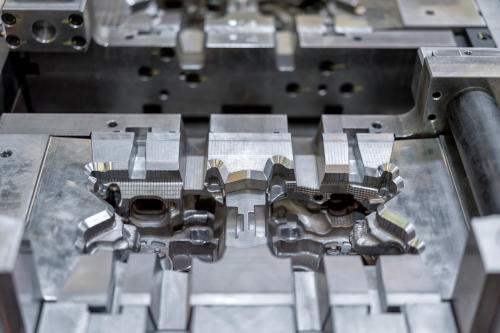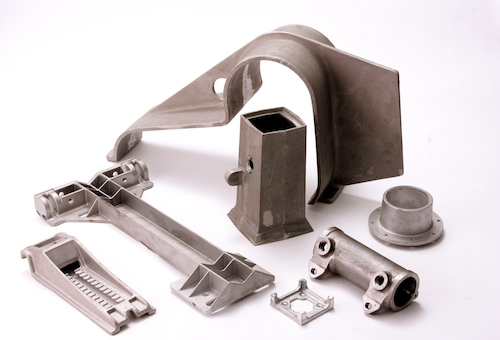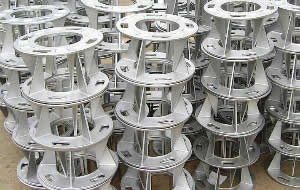Best Practices for Maintenance and Applications in the Aluminum Shop Field: A Detailed Introduction
Preserving equipment in the light weight aluminum foundry sector is crucial for functional success. Routine evaluations and anticipating upkeep can significantly minimize downtime and improve safety. Advanced innovations, such as IoT and information analytics, play a crucial duty in this process. Understanding the full extent of finest methods calls for a better assessment of details methods and their influences on performance. What are the vital parts that contribute to a reliable maintenance framework?
Significance of Regular Upkeep in Light Weight Aluminum Foundries
Regular upkeep plays an important duty in the efficient operation of aluminum foundries. By systematically inspecting and servicing devices, foundries ensure peak performance and long life of machinery. Normal maintenance tasks, such as cleansing, lubrication, and part replacement, aid prevent unforeseen malfunctions that can bring about costly downtime.
Routine checks improve office safety and security by identifying possible dangers before they rise right into major concerns. Devices that is well-kept runs much more properly, resulting in enhanced product high quality and lowered waste. Furthermore, adherence to an organized upkeep routine can support compliance with market laws, thus promoting a reputation for dependability and top quality within the market.
Carrying Out Anticipating Upkeep Methods
Predictive upkeep approaches take the principles of routine maintenance a step additionally by leveraging data analytics and advanced surveillance innovations. In light weight aluminum foundries, these methods enable operators to prepare for equipment failures prior to they happen, thereby minimizing unexpected downtimes and optimizing operational performance. By utilizing sensors and IoT gadgets, real-time data can be collected on equipment performance, enabling the identification of prospective concerns via anticipating analytics.
Optimizing Melting and Pouring Procedures
Efficient melting and pouring procedures are vital for making the most of productivity and guaranteeing the top quality of light weight aluminum castings. To enhance these processes, factories need to focus on exact temperature level control during melting, as this directly influences the metallurgical residential properties of the alloy. Making use of advanced melting modern technologies, such as induction and resistance melting, can boost energy efficiency and reduce cycle times.
Moreover, executing automated putting systems minimizes human error and maintains uniformity in the putting process. Proper mold preparation, consisting of adequate preheating, is necessary to avoid thermal shock and improve mold and mildew durability.

Enhancing Security Procedures in Foundry Workflow
Focusing on safety and security in aluminum shop operations is crucial for protecting workers and guaranteeing a productive setting. Efficient safety protocols include regular training sessions that emphasize the value of individual protective equipment (PPE), such as headgears, gloves, and safety glasses. Additionally, the facility of clear emergency situation procedures is necessary in managing possible crashes.
Regular inspections of tools and equipment assistance determine dangers before they rise into serious issues. Applying a durable reporting system encourages workers to connect safety and security issues without concern of effect. Cultivating a society of safety assurances that every staff member comprehends their role in preserving a safe and secure workplace.
Furthermore, ensuring appropriate air flow and surveillance air high quality can alleviate exposure to dangerous fumes and dust. By enhancing these methods, aluminum factories can greatly lower the risk of mishaps and create an environment where staff members really feel valued and secure, inevitably improving general operational efficiency.
Leveraging Innovation for Improved Performance
Utilizing innovative modern technology has become progressively necessary for aluminum foundries intending to improve why not try this out functional efficiency. Automation and robotics play an essential role in simplifying manufacturing procedures, reducing labor expenses, and decreasing human error. Applying real-time surveillance systems permits the continual evaluation of equipment efficiency, enabling positive upkeep and reducing downtime.
Furthermore, the combination of information analytics offers useful insights into functional workflows, helping with much better decision-making and source allocation. As an example, predictive analytics can determine potential failings prior to they happen, more maximizing upkeep timetables.
Additionally, taking on sophisticated melting and casting technologies enhances energy efficiency and material return, which are essential for sustainability in the sector. By welcoming these technological innovations, light weight aluminum factories can not only increase productivity but also preserve an one-upmanship in a significantly requiring market (aluminum casting company). Ultimately, leveraging technology is pivotal in driving innovation and boosting total operational effectiveness within the market

Frequently Asked Questions
What Prevail Indicators of Equipment Use in Light Weight Aluminum Foundries?
Typical indicators of equipment wear in light weight aluminum shops include unusual noises, reduced performance, increased resonance, overheating elements, leakages, and noticeable rust. These indications frequently indicate the need for upkeep or potential replacement to prevent pricey downtime.
Just How Can I Train Team for Effective Upkeep Practices?
To educate staff for reliable maintenance practices, one can execute hands-on workshops, create thorough guidebooks, urge mentorship programs, and carry out routine analyses to examine skills and understanding, ensuring all workers recognize upkeep procedures completely.
What Are the Ecological Regulations for Aluminum Foundries?
Light weight aluminum shops undergo numerous environmental guidelines, consisting of emissions control, waste administration, and resource conservation. Compliance guarantees marginal environmental impact, advertising sustainability while sticking to regional, national, and international ecological standards and policies.
Exactly How Do Foundries Handle Waste and Recycling of Light weight aluminum?
Shops manage waste and recycling by applying systems for collecting scrap light weight aluminum, utilizing innovative separation modern technologies, and teaming up with reusing centers to assure reliable recovery processes, thereby reducing ecological impact and promoting sustainability within the sector.
What Are the Expenses Associated With Executing Advanced Technologies?
Executing advanced innovations in shops incurs significant costs, including initial investment, training, and upkeep costs. The lasting advantages, such as enhanced performance and decreased waste, frequently warrant these expenses, leading to boosted productivity. (aluminum foundry)
